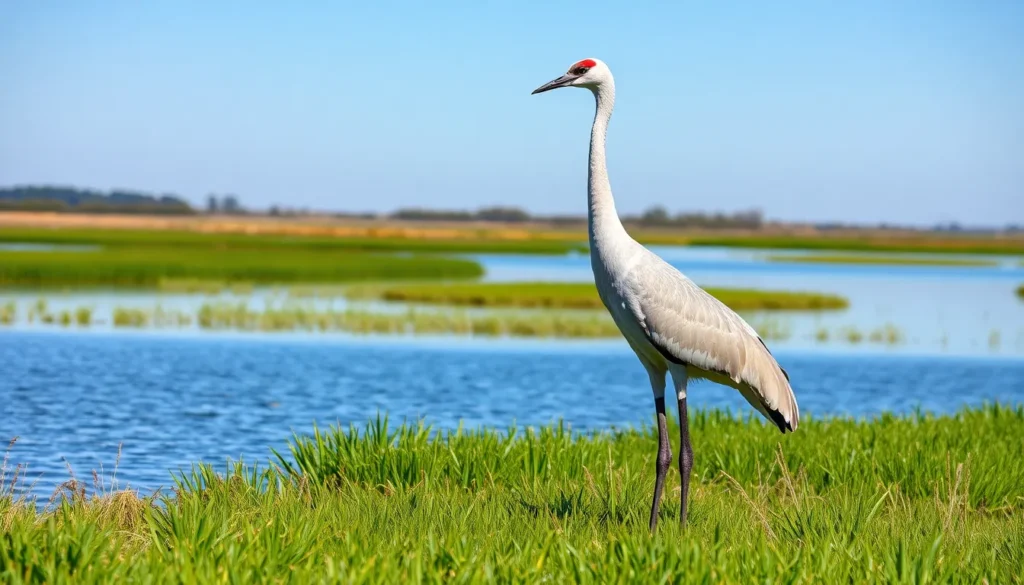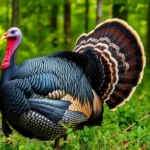Majestic cranes have captivated humans for millennia with their graceful movements and striking presence. These remarkable birds stand as symbols of longevity wisdom and good fortune across cultures worldwide. We’re drawn to their elegant necks towering heights and distinctive calls that echo across wetlands and grasslands.
From the whooping crane’s dramatic recovery story to the sandhill crane’s spectacular migrations we’ll explore what makes these avian giants truly extraordinary. These intelligent birds showcase complex social behaviors intricate mating dances and remarkable adaptability that’s helped them thrive on every continent except Antarctica and South America.
Whether you’re a seasoned birdwatcher or simply curious about nature’s most elegant creatures we’ll uncover the intriguing area of cranes. Their ancient lineage dating back millions of years tells a story of resilience evolution and the delicate balance between wildlife and human development.
What Is a Crane Bird?
Crane birds represent one of the most ancient and elegant bird families on Earth, belonging to the Gruidae family with 15 distinct species found across six continents. These magnificent creatures combine remarkable size with graceful beauty, making them among the most recognizable wading birds in the natural industry.
Physical Characteristics
Cranes display impressive physical dimensions that distinguish them from other wading birds. Adult cranes range from 35 to 69 inches in height, with the sarus crane claiming the title as the tallest flying bird at up to 69 inches tall. Wing spans stretch between 5.9 and 10.8 feet across different species, enabling their powerful flight capabilities.
Long necks extend gracefully from their bodies, allowing cranes to reach depths of up to 3 feet when foraging in wetlands. Sturdy legs support their substantial body weight, which varies from 6 to 26 pounds depending on the species. Sharp, pointed bills serve as precision tools for capturing fish, frogs, small mammals, and plant matter.
Distinctive plumage patterns vary dramatically among crane species. Whooping cranes showcase brilliant white feathers with black wingtips, while sandhill cranes display gray bodies with red crowns. Blue cranes feature slate blue coloration, and crowned cranes exhibit golden crowns with striking facial patterns.
Habitat and Distribution
Crane populations inhabit diverse ecosystems across North America, Europe, Asia, Africa, and Australia. Wetland environments serve as primary habitats, including marshes, prairies, agricultural fields, and shallow lakes where cranes find abundant food sources.
Migration patterns span thousands of miles for many crane species. Sandhill cranes travel up to 14,000 miles annually between breeding and wintering grounds, creating one of nature’s most spectacular wildlife phenomena. Whooping cranes migrate 2,500 miles between Wood Buffalo National Park in Canada and coastal Texas.
Geographic distribution reflects each species’ exact environmental requirements. Siberian cranes breed in Arctic Russia and migrate to India and China, while Australian cranes remain year round in northern and eastern Australia. European cranes nest across Scandinavia and migrate to Spain and North Africa during winter months.
Human development impacts crane habitat availability, with wetland drainage reducing suitable nesting areas by 50% across North America since the 1800s. Conservation efforts focus on protecting critical stopover sites along migration routes and restoring degraded wetland habitats essential for crane survival.
Types of Crane Birds Around the World
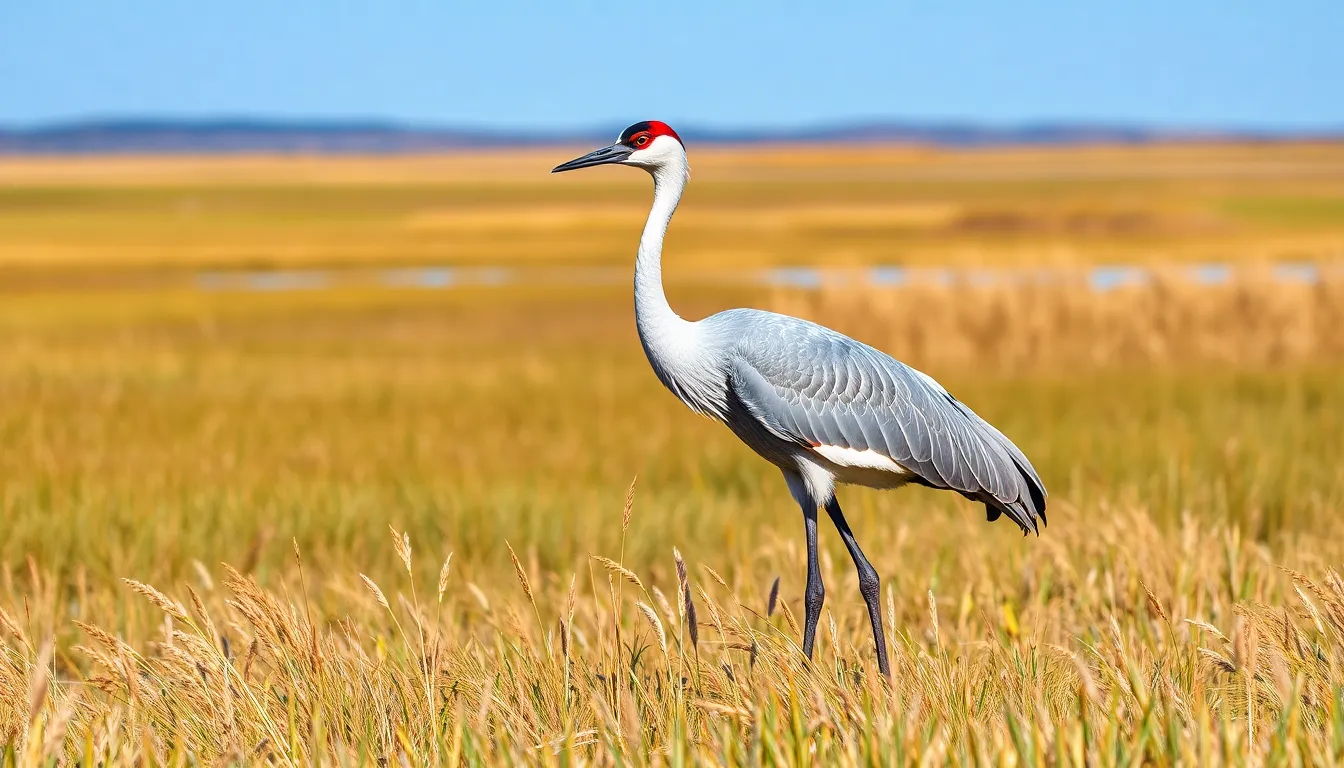
The diversity of crane species across our planet showcases remarkable adaptations to different environments and climates. Each crane species exhibits unique characteristics that distinguish them from their relatives in the Gruidae family.
Sandhill Cranes
Sandhill cranes represent North America’s most abundant crane species with over 650,000 individuals spread across the continent. These gray-colored birds measure between 34 to 48 inches in height and display distinctive red crowns that become more vibrant during breeding season. Six subspecies of sandhill cranes exist, ranging from the smaller Cuban sandhill crane to the greater sandhill crane found throughout Alaska and western Canada.
Migration patterns of sandhill cranes cover distances exceeding 4,000 miles annually, with the largest concentration gathering at Nebraska’s Platte River each spring. Approximately 500,000 sandhill cranes use this critical stopover site during their northward journey between February and April. Their diet consists of waste grains, insects, small mammals, and aquatic plants found in agricultural fields and wetland areas.
Whooping Cranes
Whooping cranes stand as North America’s tallest bird species, reaching heights of 52 to 59 inches with wingspans extending up to 87 inches. Their pure white plumage contrasts sharply with black wingtips and bright red crowns, making them instantly recognizable among crane species. The whooping crane population experienced a dramatic decline to just 15 individuals in 1941 before conservation efforts began reversing this trend.
Current whooping crane numbers have increased to approximately 506 birds in the wild as of 2019, representing one of conservation’s greatest success stories. These cranes breed exclusively in Wood Buffalo National Park in Canada and winter primarily at Aransas National Wildlife Refuge in Texas. Their 2,500-mile migration route follows the Central Flyway, with the entire journey taking several weeks to complete.
Common Cranes
Common cranes inhabit the largest geographic range among crane species, spanning across Europe, Asia, and parts of Africa. These birds measure 39 to 51 inches in height and display blue-gray plumage with distinctive white cheek patches and red crowns. Their population exceeds 400,000 individuals, making them the most many crane species in the Old Industry.
European common crane populations have recovered significantly since the 1970s, with countries like Germany, Sweden, and Finland experiencing substantial increases. These cranes perform spectacular migrations covering distances up to 3,100 miles between breeding grounds in northern Europe and wintering areas in Spain, North Africa, and the Middle East. Agricultural expansion has provided common cranes with abundant food sources in cultivated fields, contributing to their population recovery.
Red-Crowned Cranes
Red-crowned cranes earn recognition as symbols of longevity and good fortune throughout East Asian cultures, particularly in Japan, China, and Korea. These elegant birds stand 59 to 69 inches tall, making them among the largest crane species, with distinctive white plumage, black necks, and brilliant red crowns. Their population remains critically endangered with fewer than 3,000 individuals remaining in the wild.
Breeding populations of red-crowned cranes concentrate in northeastern China, southeastern Russia, and eastern Mongolia, while wintering grounds extend to the Korean Peninsula and eastern China. Japanese red-crowned cranes represent a non-migratory population that remains year-round on Hokkaido Island, where approximately 1,400 birds reside. Habitat loss due to wetland drainage and agricultural development poses the primary threat to red-crowned crane populations across their range.
Crane Bird Behavior and Lifestyle
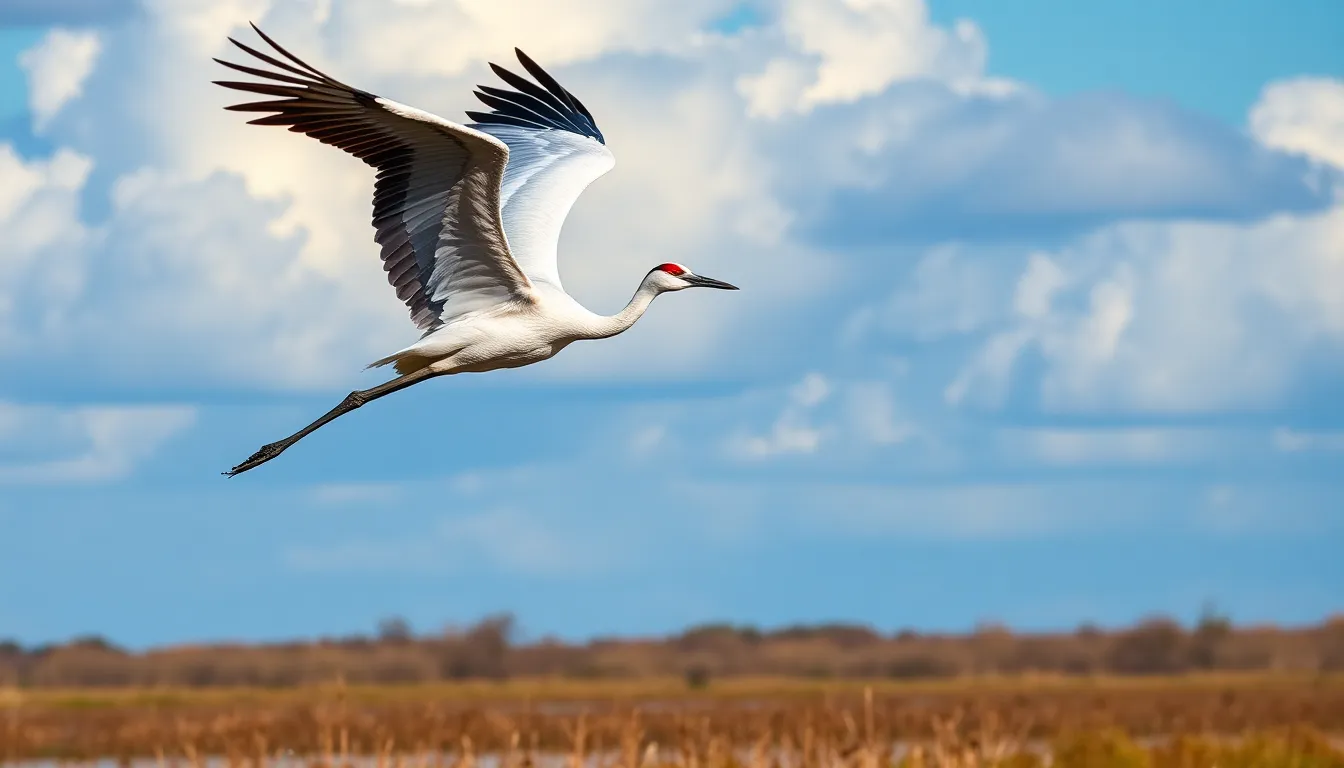
Crane birds exhibit fascinating behavioral patterns that reflect millions of years of evolutionary adaptation. We observe these magnificent creatures captivating in complex social interactions that define their daily existence across diverse global habitats.
Migration Patterns
Migration represents one of the most spectacular aspects of crane bird behavior, with most species undertaking journeys spanning thousands of miles annually. Sandhill cranes complete migrations covering up to 5,000 miles from breeding grounds in Alaska and northern Canada to wintering areas in Texas, New Mexico, and Mexico. Common cranes travel approximately 3,100 miles from Scandinavian breeding territories to wintering sites in Spain and North Africa.
We track crane migrations using advanced GPS technology, revealing that these birds fly at altitudes reaching 26,000 feet during Himalayan crossings. Siberian cranes demonstrate the longest migration routes among all crane species, traveling nearly 4,000 miles from Arctic Russia to India and China. Whooping cranes follow a narrow 2,400-mile corridor between Wood Buffalo National Park in Canada and Aransas National Wildlife Refuge in Texas.
| Species | Migration Distance | Breeding Location | Wintering Location |
|---|---|---|---|
| Sandhill Crane | 5,000 miles | Alaska/Northern Canada | Texas/Mexico |
| Common Crane | 3,100 miles | Scandinavia | Spain/North Africa |
| Siberian Crane | 4,000 miles | Arctic Russia | India/China |
| Whooping Crane | 2,400 miles | Wood Buffalo Park | Aransas Refuge |
Mating and Dancing Rituals
Crane bird mating rituals feature elaborate dancing performances that strengthen pair bonds and demonstrate fitness to potential partners. Dancing behaviors include synchronized jumping, wing flapping, bowing, and head pumping that can continue for hours during breeding season. Pairs engage in duet calling, producing harmonized vocalizations that can be heard up to 2.5 miles away across wetland territories.
Courtship displays typically begin in late winter or early spring, with cranes performing intricate choreographed movements. Male cranes initiate dancing by approaching females with wings slightly spread and heads held high. Successful pairs often return to the same breeding territories year after year, reinforcing their monogamous relationships through repeated ritual performances.
We document that crane pairs remain together for life, with divorce rates occurring in less than 5% of established partnerships. Red crowned cranes perform the most elaborate dances, incorporating stick tossing and grass throwing into their courtship displays. These ritualistic behaviors serve multiple purposes including territory establishment, mate selection, and social bonding within crane communities.
Feeding Habits
Crane birds demonstrate remarkable dietary flexibility, consuming both plant and animal matter across diverse ecological niches. Omnivorous feeding patterns include grains, roots, insects, fish, amphibians, and small mammals depending on seasonal availability and habitat conditions. Sandhill cranes consume approximately 400 grams of food daily, with corn comprising up to 90% of their winter diet in agricultural regions.
Foraging techniques vary significantly among crane species, with some probing soft sediments using their sharp bills while others grasp prey items from water surfaces. Sarus cranes wade through shallow wetlands searching for fish, frogs, and aquatic invertebrates that constitute 60% of their diet. Common cranes adapt their feeding strategies seasonally, focusing on agricultural grains during migration and breeding while consuming more protein rich invertebrates during nesting periods.
We observe that crane feeding behaviors change dramatically between seasons, with breeding pairs requiring higher protein intake to support egg production and chick development. Adult cranes regurgitate partially digested food to feed their young for the first 8 to 10 weeks after hatching. Whooping cranes demonstrate specialized feeding techniques, using their bills to probe crab burrows in coastal marshes and extract blue crabs weighing up to 100 grams.
Conservation Status of Crane Birds
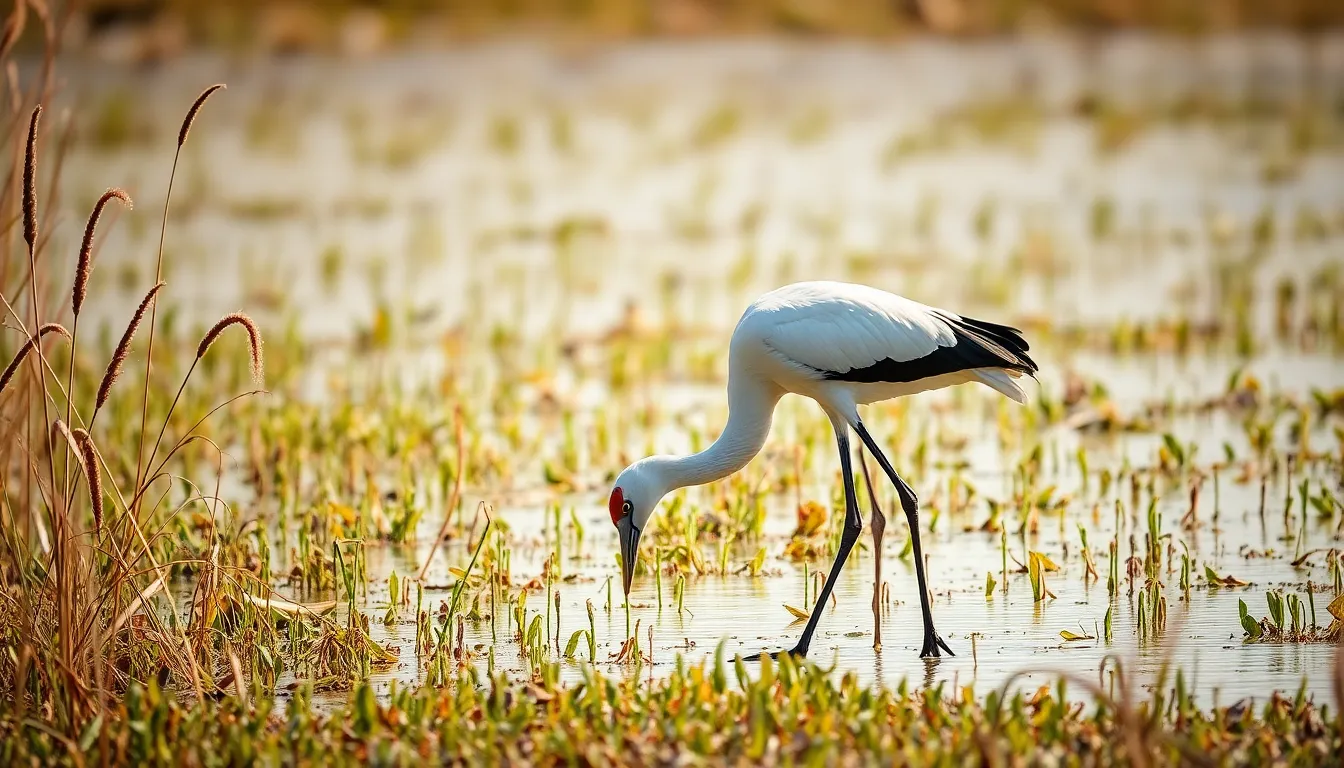
Crane bird populations face varying degrees of conservation challenges across their global range. Current conservation efforts demonstrate both successes and ongoing concerns for these magnificent species.
Threats and Challenges
Habitat loss represents the primary threat affecting crane bird populations worldwide. Agricultural expansion eliminates critical wetland breeding grounds, while urban development fragments migration corridors that cranes depend on for survival.
Climate change alters precipitation patterns and temperature cycles, disrupting the timing of food availability during breeding seasons. Wetland ecosystems experience reduced water levels, making foraging more difficult for crane families.
Power line collisions cause important mortality among migrating crane flocks. These birds fly at heights that intersect with electrical infrastructure, particularly during night migrations when visibility decreases.
Human disturbance at roosting sites forces cranes to expend additional energy relocating to safer areas. Recreation activities, hunting pressure, and agricultural practices near critical habitats create stress that impacts breeding success rates.
Pollution from agricultural runoff introduces toxins into crane feeding areas. Pesticide contamination reduces insect populations that young cranes require for proper development during their first months of life.
Protection Efforts
International cooperation drives successful crane bird conservation through collaborative monitoring programs. The International Crane Foundation coordinates research efforts across 15 crane species, tracking population trends and habitat requirements.
Wetland restoration projects create essential breeding habitat for declining crane populations. Conservation organizations partner with landowners to restore drained marshlands and establish protected corridors along migration routes.
Captive breeding programs support critically endangered species recovery efforts. Whooping crane populations increased from 15 individuals in 1941 to 506 today through intensive management and breeding initiatives.
Legal protections under the Migratory Bird Treaty Act prohibit hunting and harassment of crane species in North America. Similar legislation in Europe and Asia provides regulatory frameworks for crane conservation.
Public education campaigns raise awareness about crane bird conservation needs among local communities. Birdwatching tourism generates economic incentives for habitat protection while funding ongoing research projects.
Satellite tracking technology enables scientists to monitor individual crane movements throughout annual migration cycles. This data identifies critical stopover sites requiring immediate conservation attention and protection measures.
Observing Crane Birds in the Wild
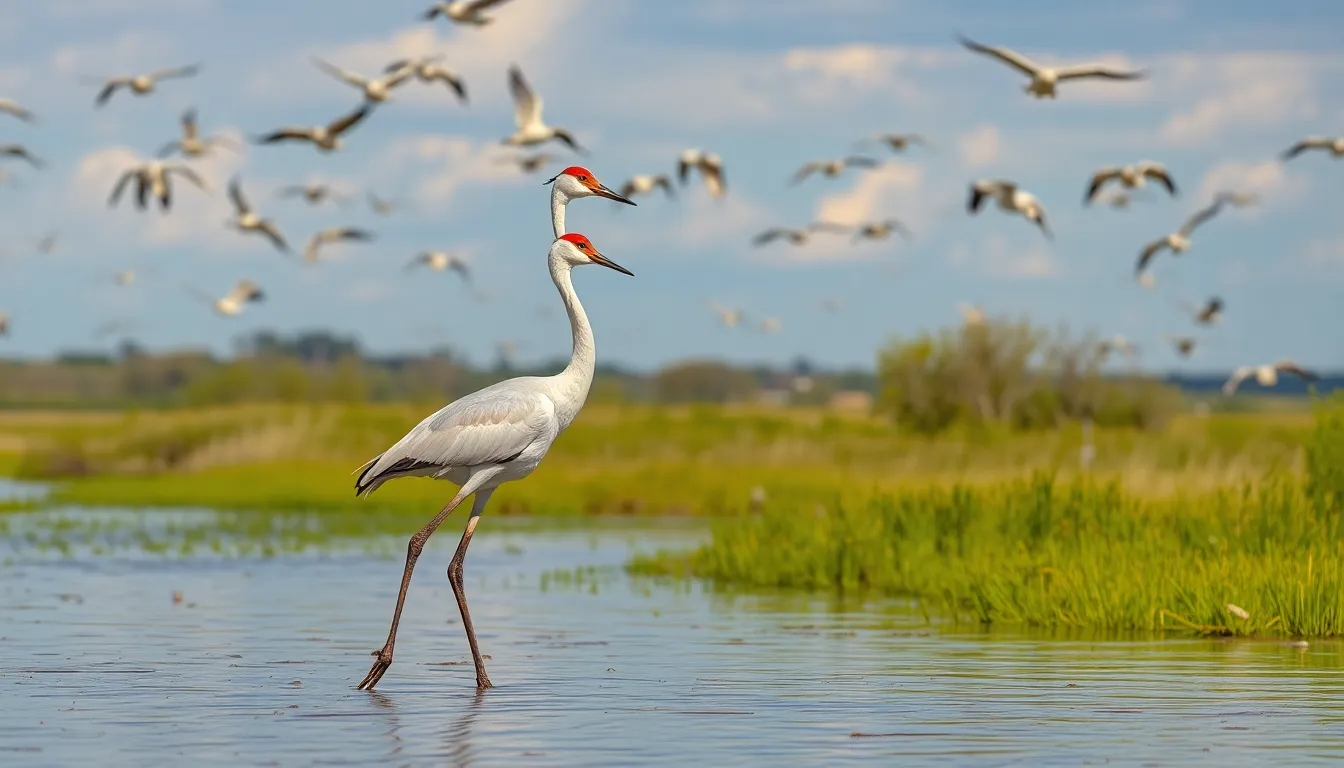
Spotting cranes in their natural habitats offers birdwatchers unforgettable encounters with these magnificent birds. We’ve compiled essential information about prime locations and optimal timing to maximize your crane watching experience.
Best Locations for Crane Watching
North America provides some of the industry’s premier crane watching destinations. Platte River in Nebraska hosts 500,000 to 600,000 sandhill cranes during spring migration from February through April. Bosque del Apache National Wildlife Refuge in New Mexico attracts over 15,000 sandhill cranes each winter along with occasional whooping cranes.
Aransas National Wildlife Refuge in Texas serves as the primary wintering ground for whooping cranes, where approximately 506 individuals spend October through March. Wood Buffalo National Park in Canada offers summer breeding observations for these same whooping cranes.
International hotspots showcase diverse crane species across multiple continents. Hortobágy National Park in Hungary draws thousands of common cranes during autumn migration. Lake Hornborga in Sweden hosts up to 25,000 common cranes in spring. Bharatpur Bird Sanctuary in India provides opportunities to observe sarus cranes year round.
Wetland complexes consistently produce the best viewing experiences. Shallow marshes with adjacent agricultural fields create ideal foraging conditions. Open grasslands near water sources offer clear sightlines for photography and observation.
Ideal Timing and Seasons
Migration periods deliver the most spectacular crane watching opportunities. Spring migration occurs between February and May depending on species and location. Autumn migration typically spans September through November across most crane ranges.
Daily timing significantly impacts crane visibility and behavior. Early morning hours from sunrise to 10 AM provide peak activity as cranes leave roost sites to forage. Evening hours from 4 PM until sunset offer excellent opportunities to witness return flights to roosting areas.
Seasonal preferences vary by crane species and geographic location:
| Species | Peak Viewing Season | Primary Locations | Best Times |
|---|---|---|---|
| Sandhill Crane | February-April, October-December | Nebraska, New Mexico, Texas | Dawn, Dusk |
| Whooping Crane | November-March | Texas, Saskatchewan | Morning, Late Afternoon |
| Common Crane | March-May, September-November | Europe, Asia | Early Morning, Evening |
| Sarus Crane | Year-round | India, Southeast Asia | Morning, Late Afternoon |
Weather conditions greatly influence crane behavior and visibility. Clear skies with light winds create optimal flying conditions. Overcast days often keep cranes grounded longer providing extended viewing opportunities. Cold fronts trigger major migration movements within 24 to 48 hours.
Conclusion
Cranes stand as magnificent ambassadors of our natural industry embodying both ancient wisdom and modern conservation success stories. Through our exploration we’ve witnessed how these remarkable birds continue to inspire cultures while facing unprecedented challenges in our rapidly changing environment.
The future of crane populations depends on our collective commitment to habitat preservation and international cooperation. As we observe their graceful flights and intricate social behaviors we’re reminded of the delicate balance between human progress and wildlife conservation.
Whether you’re planning your first crane-watching expedition or supporting conservation efforts from afar every action contributes to protecting these extraordinary birds for future generations. Their resilience offers hope that with dedicated stewardship we can ensure cranes continue to grace our skies for centuries to come.
Frequently Asked Questions
What are cranes and how many species exist?
Cranes belong to the ancient Gruidae family and are among the world’s most graceful birds. There are 15 distinct crane species found across six continents. These impressive birds range from 35 to 69 inches in height, with the sarus crane being the tallest flying bird. They’re characterized by long necks, sturdy legs, and sharp bills that help them forage in diverse wetland habitats.
What do cranes symbolize culturally?
Cranes hold deep cultural significance across many societies, representing longevity, wisdom, and good fortune. They are particularly revered in East Asian cultures, where red-crowned cranes are symbols of longevity and prosperity. Their graceful movements and majestic appearance have made them powerful symbols in art, literature, and spiritual traditions worldwide.
How far do cranes migrate?
Crane migration patterns are truly spectacular, with some species traveling thousands of miles annually. Sandhill cranes can travel up to 5,000 miles during their migration journeys. Different species have varying migration distances, with routes spanning from breeding grounds in northern regions to wintering areas in warmer climates, making them some of nature’s most impressive long-distance travelers.
What threats do cranes face?
Cranes face multiple conservation challenges including habitat loss from agricultural expansion and urban development, climate change affecting food availability, and human disturbances at roosting sites. These pressures have led to declining populations for several species, making conservation efforts crucial for their survival and requiring international cooperation to protect critical habitats.
Where are the best places to observe cranes?
Prime crane-watching locations in North America include the Platte River in Nebraska and Bosque del Apache National Wildlife Refuge in New Mexico. International hotspots feature Hortobágy National Park in Hungary and Bharatpur Bird Sanctuary in India. Migration periods offer the best viewing opportunities, with clear skies and light winds creating optimal conditions for observation.
What is the conservation status of whooping cranes?
Whooping cranes represent one of conservation’s greatest success stories. From a critically low population of just 15 individuals in 1941, their numbers have recovered to around 506 today. As North America’s tallest birds, they primarily breed in Canada and winter in Texas, with ongoing conservation efforts continuing to support their population growth.
How do cranes behave socially?
Cranes exhibit complex social behaviors and fascinating interactions. They’re known for elaborate mating rituals that include intricate dances and synchronized duet calls. These intelligent birds demonstrate sophisticated communication skills and form strong pair bonds. Their social structures vary by species, with some gathering in large flocks during migration and others maintaining smaller family groups.
What do cranes eat?
Cranes are omnivorous birds with flexible dietary habits that adapt to seasonal availability. Their diet includes aquatic plants, small fish, frogs, insects, grains, and seeds. They use their sharp bills to forage in wetland environments, adjusting their feeding strategies based on habitat conditions and food sources available throughout the year.

